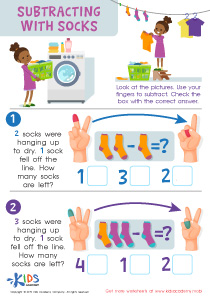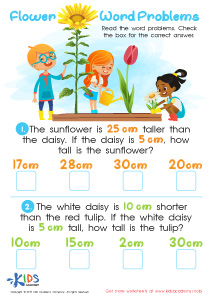Homeschool Area and Perimeter Word Problems Worksheets With Answer Keys
3 filtered results
-
From - To
Answer Keys for Area and Perimeter Word Problems Worksheets
Introduce your students to the engaging world of mathematics with our Educational Interactive Worksheets, focusing on Area and Perimeter Word Problems. Each worksheet is designed to challenge and sharpen students' understanding by applying theoretical knowledge to practical scenarios. These interactive sheets cater to a variety of learning styles, ensuring that each student can grasp the concepts effectively and at their own pace. Perfect for classroom activities or home practice, our worksheets help solidify foundational geometry skills through clear, concise, and intriguing problems. Elevate your educational resources with our collection and watch your students excel in measuring and calculating space efficiently!
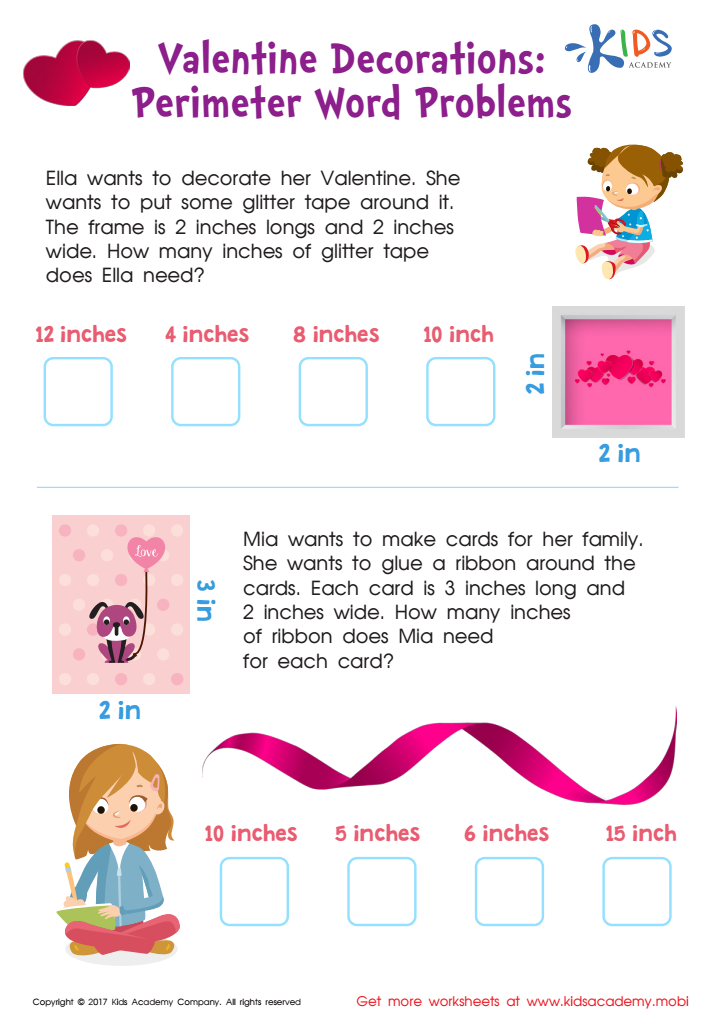

Perimeter Word Problems Worksheet
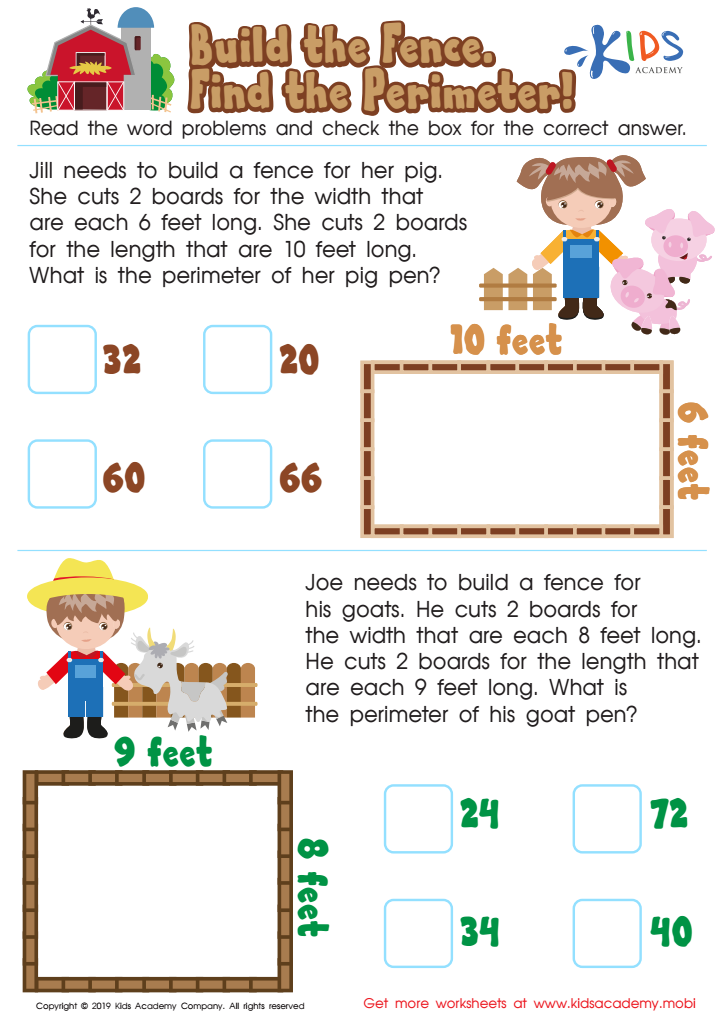

Build the Fence, Find the Perimeter Worksheet
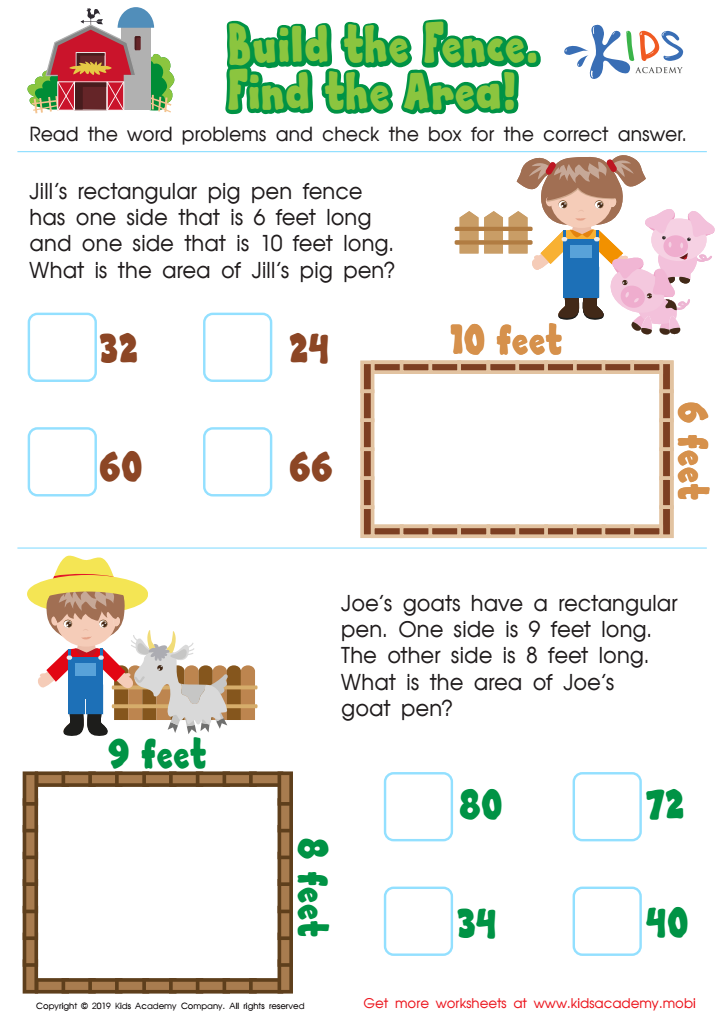

Build the Fence, Find the Area Worksheet
The Value of Educational Interactive Printables: Focus on Area and Perimeter Word Problems
In the realm of mathematics education, the importance of integrating practical exercises cannot be overstated. This is particularly true when teaching concepts such as area and perimeter, where understanding extends beyond abstract numbers to real-world applications. Here, educational interactive printables designed around area and perimeter word problems serve as invaluable tools in enhancing a student’s mathematical comprehension and application skills.
Reinforcing Conceptual Understanding
Area and perimeter are fundamental concepts in geometry that appear frequently not just in academic settings but in everyday life, influencing everything from architectural design to land development. Worksheets that focus on these topics help students transition from theoretical knowledge to practical application. By solving problems set in real-life scenarios, students can see the relevance of mathematics in their daily lives.
Promoting Engaged Learning
Educational interactive printables are designed to captivate students' interest through engaging layouts and contexts that are relatable. For instance, a worksheet might present a scenario requiring students to calculate the perimeter for fencing a rectangular garden or find the area needed to lay down new carpet in a room. These context-rich problems make learning more tangible and less abstract.
Catering to Different Learning Styles
Interactive printables are particularly well-suited to address the diverse learning styles of students. Visual learners benefit from seeing the problems laid out graphically, kinesthetic learners can engage by drawing diagrams or models, and linguistic learners can enhance their skills through the language used in describing the scenarios. This multifaceted approach aids in deeper understanding and retention of mathematical concepts.
Encouraging Problem-Solving Skills
Area and perimeter worksheets do more than just teach geometry—they encourage students to develop critical thinking and problem-solving skills. Each word problem provides a unique challenge that requires students to apply their knowledge in new ways. This kind of problem-solving practice is crucial in cultivating a student's ability to think logically and creatively.
Enhancing Collaborative Learning
Many educational interactive printables are designed to be used in collaborative settings, where students can work in pairs or small groups to solve problems. This not only makes the learning process more engaging but also helps students learn from each other, share diverse perspectives, and develop their interpersonal skills. Collaboration in learning activities promotes a deeper understanding of the material as students discuss, dispute, and solve problems together.
Assessment and Feedback
Teachers can use these worksheets not only as teaching tools but also as a means of assessment. Completing area and perimeter word problems allows educators to assess how well students understand spatial relationships and mathematical principles, and whether they can apply these concepts to solve practical problems. The interactive nature of these printables also facilitates immediate feedback. Students can often check their results as part of the activity or through guided peer review, enabling them to identify and correct mistakes in real-time, thereby reinforcing learning.
Customization for Differentiation
One of the significant advantages of educational interactive printables is their adaptability. They can be customized to suit various difficulty levels, thus catering to the diverse proficiencies within a classroom. Beginners might start with simpler, straightforward calculations, while more advanced students could tackle complex problems involving multiple shapes and calculation steps. This kind of differentiation ensures that all students are engaged and challenged appropriately according to their skill levels.
Ease of Access and Use
With the increasing integration of technology in education, printable worksheets can easily be distributed through digital platforms, making them readily accessible to a broader audience. Teachers can share these resources via email, learning management systems, or websites, allowing students to access learning materials outside of the traditional classroom setting. This accessibility supports continuous learning and allows students to practice at their own pace and comfort.
Building Confidence through Mastery
Success in solving word problems can have a significant positive impact on a student's confidence. As students become more proficient in calculating area and perimeter, their overall confidence in handling mathematical problems increases. This self-assurance can translate into better performance across various subjects, as the skills acquired are often inter-disciplinary.
Conclusion
In conclusion, educational interactive printables focusing on area and perimeter word problems are more than just sheets of paper—they are a dynamic educational tool designed to stimulate interest, foster understanding, and develop essential life skills in students. By blending theoretical knowledge with practical application, these resources equip students not only to excel academically but also to apply their learning in real-world contexts. As such, they are an essential component of a comprehensive educational strategy aimed at nurturing well-rounded, competent learners.
 Assign to My Students
Assign to My Students




